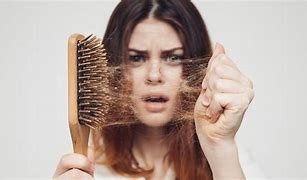Hair loss can be a frustrating and emotional experience. Whether you’re noticing more hair in the shower drain or bald patches emerging, understanding the reasons behind your hair loss is the first step toward addressing it. This article explores the common causes of hair loss, delves into what YouTube searches reveal about viewers’ concerns, and offers guidance on when to seek professional help.
Shedding vs. Hair Loss: Understanding the Difference
It’s important to distinguish between normal hair shedding and true hair loss. Shedding is a natural process, with most people losing around 50 to 100 hairs daily. New hair growth typically replaces these shed hairs, maintaining a healthy head of hair. Hair loss, on the other hand, occurs when hair falls out at a faster rate than it grows back, leading to a visible decrease in hair density. This article focuses on the various factors that can contribute to excessive hair loss.
Common Causes of Hair Loss: Unveiling the Culprits
The common causes of hair loss, ranging from hormonal changes to medical conditions.
Hereditary Hair Loss (Androgenetic Alopecia): This is the most common cause of hair loss, affecting both men and women. It’s influenced by genetics and hormones, leading to a gradual thinning of hair over time.
Telogen Effluvium: This is a temporary form of hair loss triggered by various stressors, including physical or emotional trauma, childbirth, surgery, or a sudden change in diet. Hair loss typically begins 2-3 months after the stressor and usually resolves within 6-12 months.
Alopecia Areata: An autoimmune disease that disrupts the hair growth cycle, causing patchy hair loss on the scalp or other parts of the body.
Medical Conditions: Certain medical conditions like thyroid disorders, iron deficiency anemia, and scalp infections (ringworm) can contribute to hair loss.
Medications: Hair loss can be a side effect of some medications, such as chemotherapy drugs, blood thinners, and certain antidepressants.
Hormonal Changes: Hormonal fluctuations, such as those experienced during pregnancy, menopause, or polycystic ovary syndrome (PCOS), can lead to hair loss in some women.
Traction Alopecia: As mentioned earlier, this type of hair loss is caused by hairstyles that put excessive tension on the hair follicles, such as tight braids, cornrows, or ponytails.
Aging: Hair loss is a natural part of the aging process. Hair growth slows down, and hair follicles may shrink, leading to thinning hair.
When to Seek Professional Help: Don’t Ignore the Signs
While some hair loss might be temporary and resolve on its own, there are situations where seeking professional help is crucial. Here are some red flags to watch out for:
Sudden or Patchy Hair Loss: This could be a sign of alopecia areata or another underlying condition.
Hair Loss Accompanied by Scalp Pain, Redness, or Itching: This might indicate an infection or scalp condition requiring medical attention.
FAQs:-
Why is my hair falling out?
Hair loss can stem from various factors. Here are some of the most common culprits:
Hereditary hair loss (androgenetic alopecia): This is a genetic condition affecting both men and women. In men, it typically appears as a receding hairline or bald spots, while women may experience overall hair thinning.
Stress: Once the stressor subsides, hair growth usually resumes within a few months.
Hormonal changes: Fluctuations in hormone levels due to pregnancy, childbirth, menopause, or thyroid problems can contribute to loss.
Medical conditions: Certain medical conditions and autoimmune diseases can cause it as a symptom.
Medications: Some medications, including chemotherapy drugs, blood thinners, and certain antidepressants, can have loss as a side effect.
Nutritional deficiencies: Lack of essential vitamins and minerals like iron, protein, or biotin can contribute to it.
Hairstyles and treatments: Tight hairstyles that pull on the hair, or harsh chemical treatments like bleaching or relaxing, can lead to breakage and loss.
What can I do to stop my hair loss?
The best course of action depends on the underlying cause. Here are some initial steps:
Identify the cause: Consulting a doctor or dermatologist can help pinpoint the reason for your loss and recommend the most appropriate treatment.
Lifestyle changes: Managing stress, ensuring a balanced diet rich in essential nutrients, and getting enough sleep can promote healthy hair growth.
Hair loss treatments: Depending on the cause, various treatments are available, such as topical medications, minoxidil, laser therapy, or transplant surgery.
Are there any home remedies that can help with hair loss?
While there’s no miracle cure, some home remedies might offer supportive benefits:
Scalp massage: This can improve blood circulation to the scalp, potentially promoting hair growth.
Essential oils: Some studies suggest that rosemary oil might stimulate hair growth, but more research is needed. Consult your doctor before using essential oils.
Healthy diet: Ensure you’re getting enough vitamins and minerals to nourish your hair follicles.
Important Note: It’s crucial to consult a doctor before trying any new treatments or remedies for loss, especially if you have any underlying health conditions.
Can I find informative videos about hair loss on YouTube?
YouTube can be a resource, but be selective. Look for videos from:
Dermatologists or trichologists (hair loss specialists): These professionals can provide evidence-based information on its causes and treatment options.
Reputable health organizations: Channels affiliated with organizations like the American Academy of Dermatology offer trustworthy information.
When searching YouTube, what keywords should I use?
Use specific keywords related to your loss pattern, like “hair loss receding hairline” or “hair loss after pregnancy.”
Combine keywords with terms like “causes,” “treatments,” or “dermatologist advice” to find more informative videos.
Remember: Hair loss is a common concern, but you don’t have to face it alone. A doctor can help diagnose the cause and recommend the best course of action for healthy hair growth
To read more, Click Here
